Dropcountr Launches a New App to Manage Water Usage
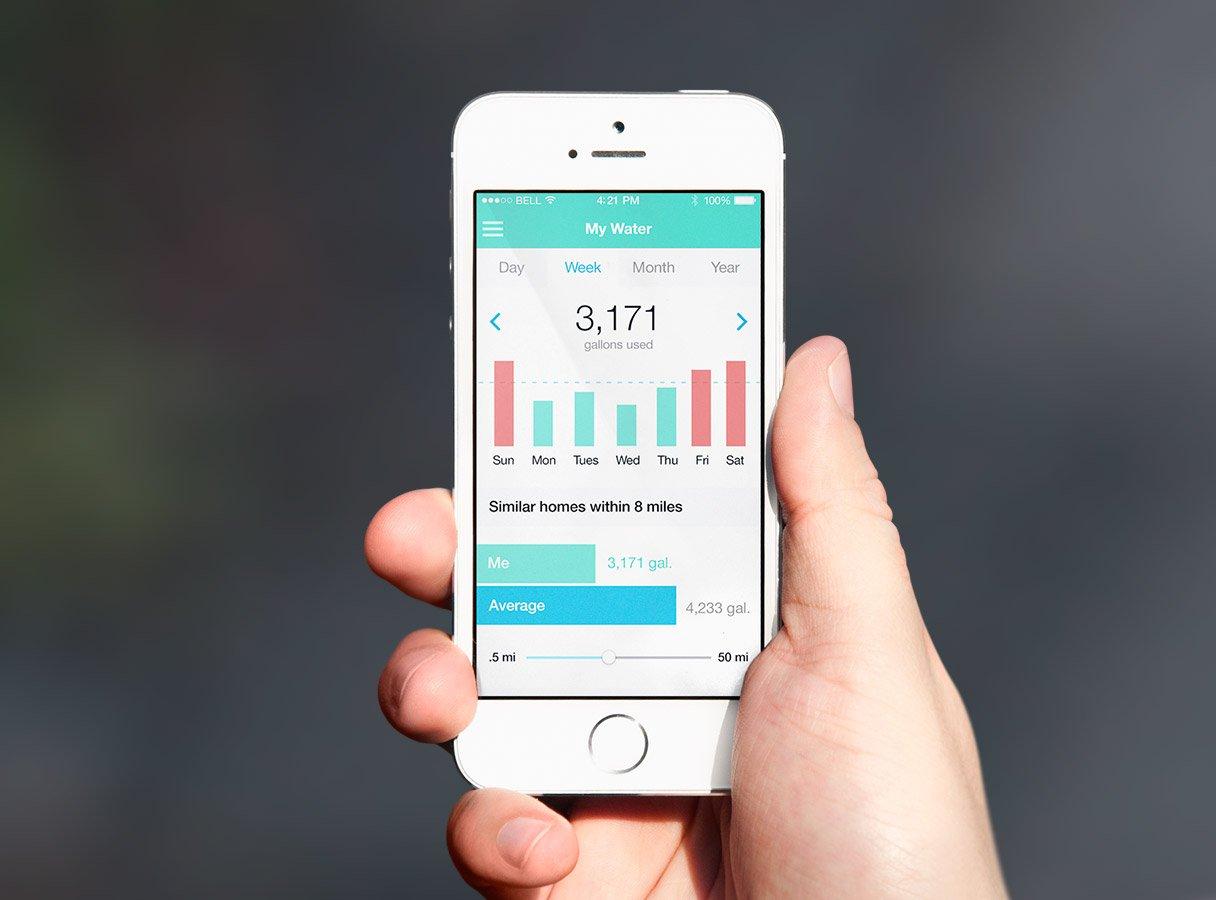

Despite the 3-year-old drought in the western U.S. and pleas from California Gov. Jerry Brown to conserve 20 percent more water, water use has instead risen by 1 percent in the state. This disappointing outcome illustrates that voluntary reductions have so far proved to be ineffective. Yet a contributing factor could be that consumers are not without good intentions, but rather are lacking the proper tools to do the right thing. As the saying goes, "you can't manage what you don't measure," and traditionally, the tools for consumers to measure their water use have been pretty weak.
Typically, a bill from the water utility arrives in the mailbox showing a three-month history of water usage data in terms of "units," which as a measure is hard for the average householder to visualize. And in any case, the bill doesn't allow an easy assessment as to whether those units used were reasonable or excessive.
Addressing this knowledge gap, Redwood City, California-based startup Dropcountr is about to launch its service to provide tools to both consumers and utilities in a clear and visual format -- which will allow this scarce resource to be better managed. I recently spoke to Dropcountr's CEO, Robb Barnitt, to learn more about its service and how it might prompt more efficient use of water.
First off, Barnitt told me that research by the Public Policy Institute of California shows that consumers are pretty receptive to conservation efforts, with 75 percent of people being in favor of mandatory conservation. I was a little surprised by this -- especially as I don't see 75 percent of suburban homes with dead lawns!
However, this may be explained by the fact that people are simply really bad at estimating their water use. "The average Californian estimates they use half the amount of water than they actually do use" Barnitt explains. "People want to do their part, but don't have the tools and direction to make a contribution."
Dropcountr aims to put the right tools literally in the hands of consumers via a free mobile app for both iOS and Adroid mobile devices. Using a language people understand -- gallons -- the app will be able to provide real-time data on water usage to homeowners, incorporating features such as push notifications when water use is about to cross over into a higher-rate tier, and alerting homeowners when a potential leak is detected. In addition, people will be able to compare their water use with others in similar homes, which as Barnitt points out, taps into a bit of behavioral psychology: "Everyone wants to be better than average, and when they find out they aren't, they are highly motivated."
It's easy to see how such real-time data will allow people to proactively conserve water in a way that their already-out-of-date paper bill cannot. Barnitt told me the consumer focus is paramount, adding that the app incorporates, "simplicity and elegance of design, so that people will use it."
Of course, the system will only work if the water utility is on board and makes the data available to Dropcountr so that the startup can disseminate it to consumers. But the good news is: It won't require significant capital expense on a utility's part to participate. The only requirement is that utilities have meters. Smart meters are best, but as long as an address is metered, it will work with Dropcountr.
Consumers who download the app and are disappointed to find that their utility is not participating can use Dropcountr's "utility poke." The app will geo-locate the customer, determine if the local utility is participating, and if not, users can send an automated e-mail to the utility expressing their interest in using Dropcountr.
Though there is a strong emphasis on tools for the consumer, Dropcountr's customer is actually the utility, Barnitt points out, and the product was designed so that it's compelling for utilities to become partners. Barnitt told me: "The message has sunk in in California that conservation is important. All bets are off as to a continuous supply of water, and cities don't want water to limit development." As such, the hope is that utilities will be keen to take advantage of Dropcountr's services to help them determine methods to better manage their water resources.
Accordingly, Dropcountr's product incorporates a "utility admin. dashboard," which takes the raw usage data and, by doing back-end analytics on the utilities' behalf, will let utilities better monitor water use in a real-time, visual and intuitive way. This allows utilities, for example, to do things such as filter accounts who are high users, or see which addresses are engaged in rebate programs throughout their district.
And equally important: As well as helping with conservation efforts, Dropcountr believes that its tools will allow utilities to establish a better line of communication with their customers -- something that they are not typically good at today. As such, Dropcountr will assist utilities with outreach materials to consumers.
In time, it is hoped that by using the technology and applying their analytics, it will be possible to gather the right kind of data so that a reasonable water budget can be determined at the address level. Today, conservation efforts often ask households to make across-the-board percentage reductions in water use over the prior year -- potentially penalizing already frugal water users. In time, Dropcountr may be able to make water allocations more fair.
The service launches initially in Folsom, California on Sept. 1, and shortly after, Los Altos Hills, California will be online. Dropcountr also hopes to announce several other participants in the coming weeks.
Image used with permission of Dropcountr
Follow me on Twitter: @PhilCovBlog
CSR Report Review: Salesforce.com and Cloud Computing Sustainability
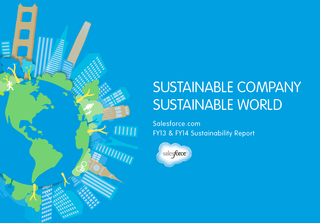

There will always be debate about whether having more and more of our data on the cloud is really more sustainable in the long run, but one company making a difference in this space is Salesforce.com. On the business side, it is easy to argue this San Francisco-based company has had a beneficial impact on customer relationship management (CRM) systems. In recent years the US$4 billion company has become a major force in the cloud-computing sector, and is frequently touted for both being a truly innovative company as well as for its sustainability agenda. But the company is making a difference in communities and on corporate responsibility issues as well.
To that end, Salesforce.com recently released its latest sustainability report. A lot of what the report discusses is framed over how the company has evolved since its founding 15 years ago, and it can offer its peer companies, in Silicon Valley and beyond, ideas on how to become a more responsible and efficient operation.
The first highlight that must be shared is Salesforce.com’s community-centric approach to philanthropy. Described by the company as a “1-1-1 Model,” the company has long pledged to contribute 1 percent of its product, equity and employees’ time to projects devoted to social change. The results speak for themselves: As of January 2014, the company’s employees have collectively volunteered 580,000 hours to various organizations — and each employee on average is granted approximately six paid days so they can volunteer how they choose. By the company’s count, donations of its technology have led to 20,000 educational and nonprofit organizations using Salesforce.com products. And since 1999, Salesforce.com has distributed over US$55 million in grants for projects ranging from community development to technological jobs training. The ability for employees to give back, and the encouragement to do so, is one reason why the company regularly ranks highly in Fortune’s and Forbes’ lists of the best companies for which to work.
While its further development of cloud computing has accelerated the company’s growth, Salesforce.com has also strived to make its business run more efficiently — including the bricks-and-mortar shells that house the company’s employees. The company has embraced LEED building standards and has committed to such green building initiatives for all future build-outs. The result is a huge increase in the percentage of Salesforce.com’s building portfolio that meets LEED standards — up from 21 percent in FY2013 to 38 percent in FY2014. Meanwhile the company has steadily increased the amount of green energy used to power its data centers — a nudge upward from 17 percent to 19 percent between FY2013 and FY2014. Over the past year Salesforce.com committed to purchasing renewable energy credits (RECS), at a total of 15 million kilowatt hours, to compensate for 15 percent of the company’s overall energy consumption.
Furthermore, the company claims its cloud-computing networks’ architecture provides far more energy and carbon efficiency than other information technology platforms. As a result, while the company’s carbon footprint has increased because of its overall growth, Salesforce.com says its customers’ average emitted carbon per transaction has stayed flat, at 0.07 grams during both FY2013 and FY2014.
For more information on Salesforce.com’s FY2014 report, which includes many anecdotes about the company’s approach towards business and GRI index, the report in full can be viewed here.
Image credit: Salesforce.com
Leon Kaye has lived in Abu Dhabi for the past year and is currently spending some time in Uruguay. Follow him on Instagram and Twitter. Other thoughts of his are on his site, greengopost.com.
Italian Scientists Turn Food Waste Into Bioplastics
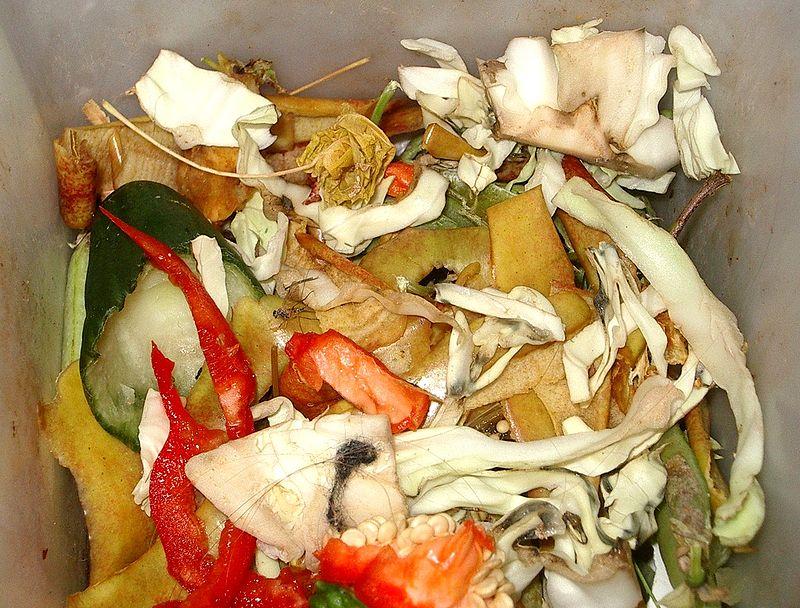

Food waste causes a range of environmental problems when left to rot in a landfill. A staggering amount, 1.3 billion tons of food, is wasted globally every year, according to the United Nations Environment Program (UNEP). The carbon footprint of all that wasted food is estimated at 3.3 billion tons of carbon equivalent.
Wasted food also means wasted water. The amount of water used to produce food that is wasted is equivalent to the annual flow of Russia’s Volga River or three times the volume of Lake Geneva. That is not good at any time -- but becomes particularly poignant during a time when the entire state of California is in its third year of drought. There is also an economic cost to food waste -- $750 billion a year.
On to another problem: Conventional plastic is made from petroleum, a fossil fuel, and contributes to climate change. Bioplastics are made from plant material and are an alternative to conventional plastic. However, the multiple steps needed to produce bioplastics mean more energy is needed. And the crops used to produce them, like corn, are probably better suited for human consumption.
As a solution, a group of scientists at the Italian Institute of Technology (IIT) in Genova, Italy, are working on ways to create bioplastic from food waste. Their results were published earlier this summer in American Chemical Society’s (ACS) journal Macromolecules.
IIT scientists looked at the process for creating cellophane, which includes passing cellulose -- the material that makes up plant cell walls -- through acid and alkali baths. They found out that when cellulose derived from cotton and hemp is dissolved in the common chemical trifluoroacetic acid, it is converted to a form that can be molded into plastic without having to be processed any further.
They tried the same process on vegetable waste products that included rice hulls, cocoa pod husks, spinach and parsley stems obtained from an Italian company that powders vegetables to be used in vegetables drinks and colored pasta. As Ilke Bayer from IIT said, “These are the parts we don't want to eat.” Or as the scientists wrote in their study published in Macromolecules, “Bioplastics with a wide range of mechanical properties were directly obtained from industrially processed edible vegetable and cereal wastes.”
From electronics to food packaging, plastics are so widely used that life as we know it would come to a standstill without them. Perhaps one day bioplastic from food waste will be used in the various applications our 21st century lives depend on.
Image credit: Muu-karhu
Stop Washing Valuable Energy Down the Drain
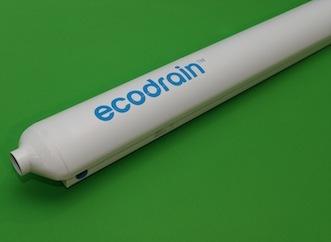

Ever wondered which renewable energy source has the quickest payback? Hint: It may be coming from your shower. Or toilet.
But first, a question: Did you take a shower today?
If so, you engaged in an activity that tosses 80 to 90 percent of the energy used to heat the water down the drain. Water heating is among the most energy intensive activities in most homes, and near the top most expensive as well.
For most people, it doesn’t even occur to them that there might be something to do about wasted energy from their morning shower, aside from reducing the amount of water used via a low-flow shower head. Other options available have typically meant fairly complex installations in limited locations -- too many barriers for all but the most motivated people.
Montreal, Canada-based Ecodrain has created a simple solution to the problem: Reuse the heat of the drain water, transferring it back to the water heater, with no mingling of clean and gray water. Up to 45 percent of the heat is recovered. Water flow is optimized for maximum heat distribution, yet the system has no moving parts, so maintenance is greatly simplified. More than 4,700 iterations in the making, the system -- also called Ecodrain -- is designed to maximize utility while minimizing installation effort and eliminating clogs.
This quick, cheeky explainer video makes the case for heat exchangers entertainingly.
Where Ecodrain excels is in giving people the ability to make an environmentally beneficial choice while saving money, without needing to change their lifestyle or behavior. Such options are key to a broader section of the population making more choices like these.
The potential impact is substantial, and the payoff rapid (17 to 43 percent annually). For one person taking a 10-minute shower daily, Ecodrain saves the annual equivalent of:
- The CO2 emissions of 98.9 gallons of gas
- The greenhouse gas emissions of 728 pounds of waste sent to the dump rather than recycled
- The carbon sequestered in 22.6 tree seedlings grown for 10 years
Beyond the shower and into broader applications
While it’s most known for its home-related uses, Ecodrain is proving malleable to a range of commercial and industrial applications, creating reuse opportunities in unexpected places. Office air conditioning using the toilet, for instance. As Ecodrain puts it:
"Office buildings typically use a lot of cold water for bathrooms. Office buildings also use a lot of air conditioning in the summer. Since heat always naturally travels from hot to cold, air conditioners consume a lot of energy because they pump hot inside air into the even hotter outside air, against its natural tendencies."A more natural way to cool is to transfer heat from the hot air into cooler water. Cooling air using fresh water is not allowed in most buildings because it wastes water. However, cool drain water can provide the same low-cost cooling, without wasting any water."
Given that a typical office building uses more than 25 percent of its water supply for cooling towers, according to the EPA, the potential impact is significant. Factor in the fact that California, Texas and Florida are among the biggest users of air conditioning while also facing serious, persistent drought, pursuing options to minimize water use is a must.
When put to use in industrial settings like the Hopital de Rivière Rouge in Quebec, the impact is substantially amplified beyond that of personal-scale installations. Reusing their laundry water heat on one machine will means an estimated 768 times the energy and cost saving potential, as compared to private home use.
While solar and wind may have a higher profile in the renewable energy world, heat exchangers such as Ecodrain offer reliable, substantial, immediate and cost-effective benefits on resource uses ripe for optimization.
Readers: Where has your business been finding unexpected ways to better use its resources? Have you used heat exchangers in your operations? In what way? Tell us about it in the comments section.
Image courtesy of Ecodrain
Paul Smith is a sustainable business innovator, global trend tracker, the founder of GreenSmith Consulting, and has an MBA in Sustainable Management from Presidio Graduate School in San Francisco. He creates interest in, conversations about, and business for green (and greening) companies, via social media marketing, including Ecodrain.
Kellogg Sets Bold Sustainability Goals for 2020
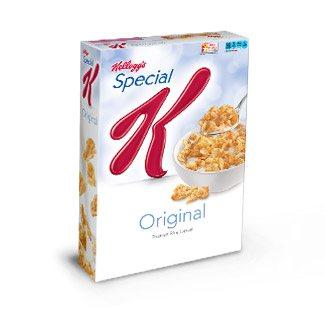

Fans of Frosted Flakes and Eggo, two Kellogg Co. brands, who are also champions of sustainability have something to cheer about: Kellogg announced new social and environmental commitments earlier this month.
Among other things, the company committed to responsibly source its top 10 ingredients and materials by 2020. The 10 ingredients include corn, wheat, rice, oats, potatoes, sugar (beets and cane), cocoa, palm oil, fruits and honey. A combination of certification and documented continuous improvement will be used. In addition, Kellogg will validate compliance across all of its direct suppliers by 2015.
Kellogg will work with its global palm oil suppliers to source “fully traceable” palm oil, as stated on its website, from certified sources that are “environmentally appropriate, socially beneficial and economically viable.” It will require its suppliers to comply with Roundtable on Sustainable Palm Oil (RSPO) principles and criteria by Dec. 31, 2015. The majority of palm oil comes from Indonesia and Malaysia, and palm oil plantations are causing massive rainforest destruction in both countries.
Kellogg will source cocoa, fruits and honey through direct investment where continuous improvement occurs in the areas where those ingredients are grown. The company will engage with its suppliers and local experts and will assess continuous improvement on metrics such as water fertilizer use, greenhouse gas (GHG) emissions and livelihoods. It will source sugarcane from sources that are both responsible and sustainable using Bonsucro measurement standards, a global metric standard for sugarcane.
"This company was founded on the belief that there's an inherent goodness in grains and that continues to hold true today," said John Bryant, Kellogg Co. chairman and CEO, in a statement. "We are committed to nourishing families so they can flourish and thrive. Our new sustainability goals will help us do this by delivering high-quality grains in a responsible way that enriches the lives of consumers and agricultural growers around the world."
Lightening impact
Kellogg’s environmental commitments include expanding the use of low-carbon energy in plants by 50 percent by 2020. To help achieve its low-carbon energy goals, Kellogg’s Eggo bakery in San Jose, California recently installed fuel cell technology that generates enough renewable energy to produce about half of the facility’s annual electrical consumption. The system also uses less water to generate the power than if it had been supplied by the utility grid. That is a great thing in the midst of California’s three-year drought.
Kellogg is committed to increasing the number of plants sending zero waste to landfill to 30 percent by 2016. About 3 percent of the company’s overall waste ends up in landfills. The other 97 percent is either recycled or sold to livestock operators to be used for animal feed and a small amount -- .01 percent -- is sent for energy recovery.
Other environmental commitments include reducing energy, GHG emissions, water use and packaging:
- Kellogg will reduce energy and GHG emissions by an additional 15 percent from 2015 performance.
- It will implement water reuse projects in 25 percent of its plants by 2020.
- It will further reduce water use by an additional 15 percent from 2015 performance.
- It will ensure that 100 percent of timber-based packaging continues to be either recycled or from certified sustainable sources.
Helping to make sustainable agriculture a reality
Kellogg is also committed to sustainable agriculture, particularly working with farmers, millers and agricultural suppliers to produce more sustainable agriculture, including adapting and being more resilient to climate change. To that end, the company provides data, maps, tools, agronomic support and training to support improvement in climate adaptation. In addition, Kellogg works with small holder farmers and women farmers.
Image credit: Kellogg Co.
TODAY: Twitter Chat with Heineken on Local Sourcing: Join #BaBF


We had such a great Twitter chat with Heineken a few months ago, that we brought the experts together again for Round 2!
Today on Twitter, we learned about what "local sourcing" means to Heineken by hosting a Twitter Chat at the hashtag: #BaBF.
A cornerstone of the Heineken sustainability strategy, Brewing a Better Future (#BaBF), is focused on growing the percentage of locally-sourced ingredients in its raw material supplies. The company wants to operate in a way that improves the quality of life for local individuals and communities; helps drive inclusive growth particularly in economies in Africa; and helps the environment and ensures a consistent supply of raw materials.
CSR Expert Aman Singh and TriplePundit led an hour-long conversation with Heineken’s sustainability leadership team, including:
- Michael Dickstein (MD) - Director, Global Sustainable Development
- Paul Stanger (PS) – Local Sourcing Director, Africa & Middle East Region
- Edwin Zuidema (EZ) - Global Category Director, Raw Materials
Behind the Scenes: A Look at the Creation of Symantec’s Signature CSR Program
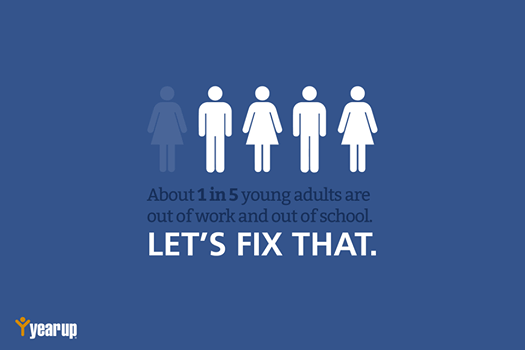

By Cecily Joseph
At Symantec we’ve been undergoing a transformation in all areas of the company, and this includes our approach to philanthropy.
Given the need for a larger pipeline of skilled workers in the technology sector, we have historically invested the majority of our philanthropic dollars in broad efforts that support science, technology, engineering and math (STEM) education. And while we have built strong partnerships with organizations and are collectively making a difference, we saw potential for even greater impact.
We embarked on a journey to find ways that we could make more meaningful social impact. We ended up developing a shared value signature initiative for Symantec. That is, an initiative that not only goes beyond grant-making to leverage our business assets, but that also contributes to our business bottom line and creates societal benefit.
We began by working with both internal and external stakeholders to define what that shared value program would look like. We created an internal steering committee made up of executives from across the company representing technology, educational services, talent acquisition, marketing, government affairs and regional sales groups. The signature program strategy was guided by key findings from data and research which showed that cybercrime is the most prevalent online threat with over $388 billion in global costs and that there is a shortage of cybersecurity professional who are needed to protect nations, businesses and individuals with global demand expected to grow to 4.9 million jobs by 2017. In the U.S. alone, there are 300,000 cybersecurity jobs that cannot be filled due to lack of trained professionals. Of this, an estimated 20 percent can be filled by people without college degrees.
As the experts in information protection, Symantec set out to launch a first-of-its-kind program to address the global workforce gap in cybersecurity and dedicate our resources to providing new career opportunities for under-served young adults (i.e. returning military veterans, unemployed and underemployed youth especially amongst people of color) who may not be college-bound. And that program came to life this year as the Symantec Cyber Career Connection (SC3).
Demand for cybersecurity professionals is only expected to increase as the private sector faces unprecedented numbers of data breaches and cybersecurity threats. Symantec’s Internet Security Threat Report has shown that the amount of data breaches grew by 62 percent in 2013 and that approximately 552 million identities were exposed worldwide as a result of data breaches.
As a leader in cybersecurity we know that by focusing our efforts here, we could make an impact in helping to solve the cyber career gap, moving underserved young adults out of low-end jobs and into highly paid and meaningful careers, and make the world a safer place.
See the SC3 website for complete information.
Image credit: Year Up
Cecily Joseph is Vice President Corporate Responsibility & Chief Diversity Officer at Symantec, where she oversees the implementation of community investment efforts including the focus on STEM and cybersecurity education, manages environmental responsibility and climate change policy, works with management to set and deliver on diversity goals, and oversee the communication of the company’s corporate responsibility strategy, goals and activities (learn more here)
Renewables Generate 100 Percent of New U.S. Energy Capacity in July

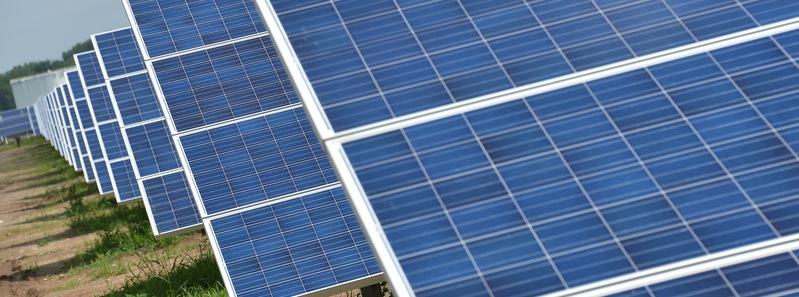
We hear a lot from the optimists about how renewable energy is experiencing skyrocketing growth and should displace fossil fuels in no time. Then there are the naysayers who insist solar, wind and other forms of clean energy will never provide the power America needs. The truth is somewhere in between. One fact cannot be disputed however: All new energy capacity generated last month in the U.S. was 100 percent due to renewables.
According to the latest report issued by the Federal Energy Regulatory Commission’s (FERC) Office of Energy Projects, 405 megawatts of new installed capacity was added to America’s grid: 379 MW from wind, 21 MW from solar and 5 MW from hydropower.
While those statistics for July may seem to be a fluke, the outlook for renewable energy growth in the U.S. is positive overall. And the bulk of new capacity generated this year is clean energy, or at least, cleaner energy. Renewables have accounted for 54 percent of new energy capacity in the U.S. since the beginning of this year. Even the natural gas boom has not competed with the likes of solar, wind and other forms of renewables; natural gas has accounted for 46 percent of that growth in capacity nationwide since Jan. 1. Meanwhile, no new coal or nuclear projects have launched during the first seven months of 2014.
When you look at the country’s current total operating capacity, however, reality still hits. Natural gas is still the preferred means of energy generation with 42 percent of the nation’s capacity; despite the “war on coal,” 28 percent of the country’s power comes from this source; renewables come in at a smidge under 16 percent. Solar still only provides less than 1 percent to the nation’s grid.
Nevertheless, the trend towards a more diverse, and cleaner, energy portfolio continues. As FERC’s most recent report showcases, several notable renewable energy projects have been green-lighted: E.ON’s 218 MW wind project in the Texas Panhandle; another Texas wind farm generating 161 MW of power in Oldham County; Ikea’s 2.4 MW solar project in Maryland; and the 9 MW Indy Motor Speedway solar farm are just a few of the marquee clean energy projects that are incrementally boosting U.S. capacity in renewables.
Despite political inertia, infrastructure challenges and the influence energy companies have on American policy, change is underway — much of it due to companies that realize safe and clean energy is as much about long-term savings as it is about ensuring the planet’s future.
Image credit: Indianapolis Motor Speedway
Leon Kaye has lived in Abu Dhabi for the past year and is currently spending some time in Uruguay. Follow him on Instagram and Twitter. Other thoughts of his are on his site, greengopost.com.
U.K. Standards Group Calls Out Peabody Energy for Misleading 'Clean Coal' Claim
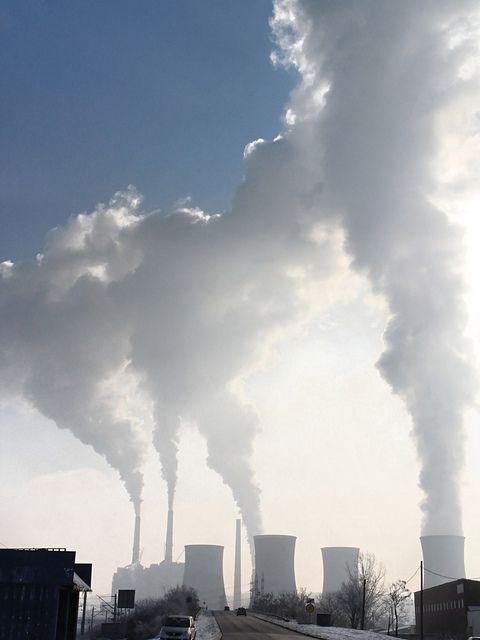

No matter how one mines or washes it, there’s no such thing as clean coal, despite what politicians and the coal industry say. So, it’s refreshing to see the U.K.’s Advertising Standards Authority bar Peabody Energy from making that misleading claim in its “Advanced Energy for Life” ad campaign.
The ASA ruled, in a case brought by the World Wildlife Fund, that Peabody Energy should not use the term “clean coal” to imply that coal is emission-free or “the solution for better, longer and healthier lives.” The ad says “energy poverty” is the “world’s No. 1 human and environmental crisis,” and Peabody Energy “is working to build awareness and support to end energy poverty, increase access to low-cost electricity and improve emissions using today’s advanced clean coal technologies.”
ASA said, “The ad must not appear again in its current form. We told Peabody Energy, Inc. to ensure that future ads did not state or imply that their technologies were emission-free or similar unless they could demonstrate that this was the case.”
A Peabody press release responded to the ASA ruling like this: “The ASA recognized Peabody's goal of raising awareness and support to alleviate energy poverty and create electricity access using all forms of energy. The group also called for greater clarification regarding use of the term ‘clean coal technologies.’ Peabody believes the term ‘clean coal technologies’ is widely accepted. The U.S. Congress itself defined the term clean coal, and Japan and China have recently affirmed the use of clean coal technologies as important to their energy strategies.
"Peabody will continue to broadly and globally communicate the benefits of advanced coal solutions as part of an all-in energy strategy to create energy access, keep energy costs low and continue to improve the environment," Gregory H. Boyce, chairman and CEO, said.
Even if the most advanced coal plants could eliminate all emissions of acid rain pollution and mercury through clean coal technology — this hasn't been clearly demonstrated and probably can’t be done cost-effectively — there’s still carbon pollution emissions and the damaging extraction process to deal with. Coal is the dirtiest of all fossil fuels; clean coal technology tries to minimize that dirtiness and reduce its harsh environmental effects by using multiple technologies to clean coal and contain its emissions.
Triple Pundit noted four years ago: “Coal’s damaging side effects are not limited to the combustion of the fuel source. The extraction process leads to polluted waterways, deforestation, erosion and the leveling of mountains, species destruction and damage to human health.”
Coal is big business: Peabody Energy’s home page features updates of the company’s latest stock price and a 2014 coal sales counter, but no count of the world’s poor lifted from “energy poverty.” As Hamlet said: “Words, words, words.” ASA was right to call Peabody on its greenwashing.
Image: Coal-fired Power Plant Smokestack Emissions by Emilian Robert Vicol via Flickr
What's the Difference Between Certified B Corps and Benefit Corps?

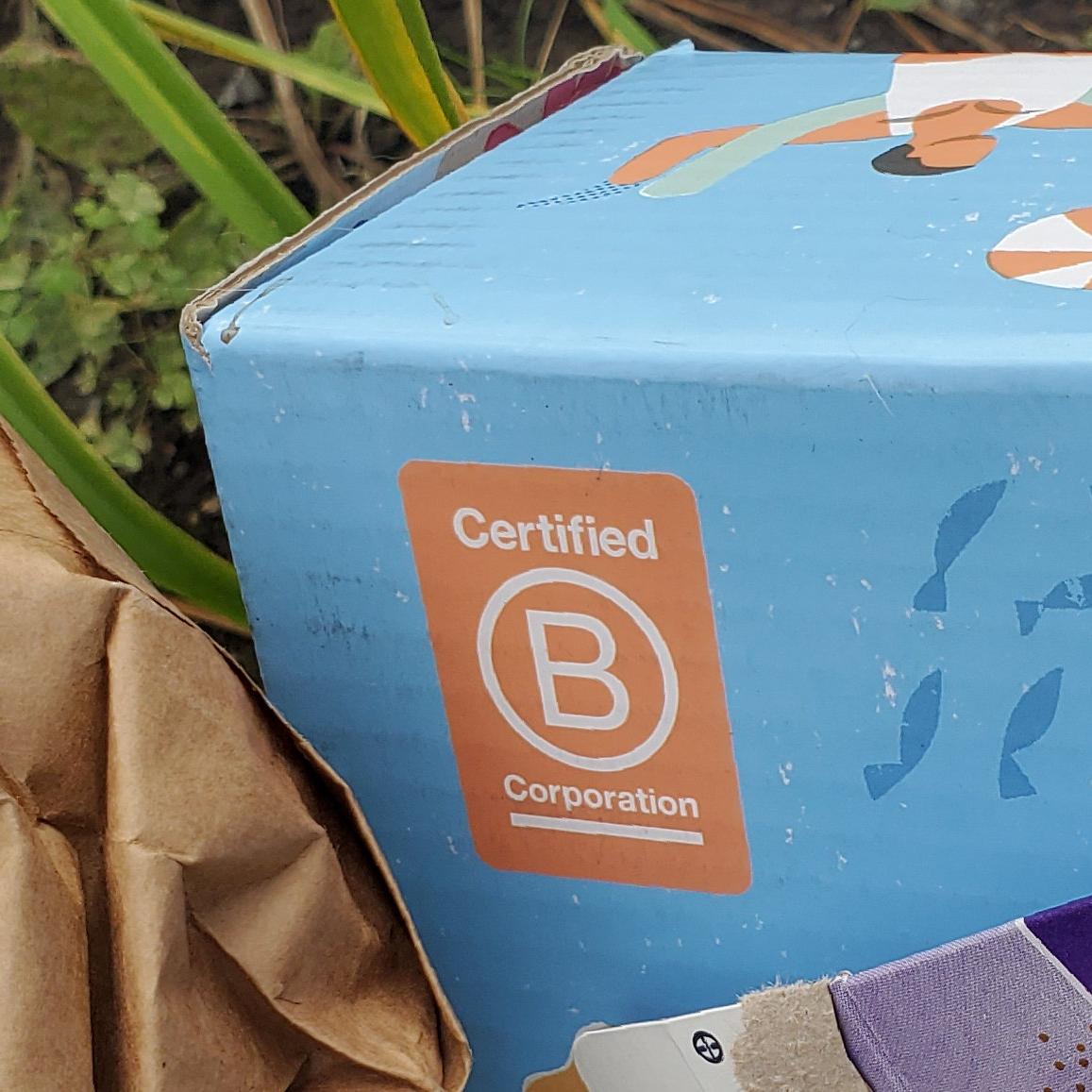
This is the third in a weekly series of excerpts from the upcoming book “The B Corp Handbook: How to Use Business as a Force for Good.”
By Ryan Honeyman
It took me 12 months of research, over 100 interviews and writing a 240-page book, but I finally figured out the difference between Certified B Corps and benefit corps.
If you are confused about the difference between the two -- or didn’t even know there was a difference -- don’t worry. This is one of the most commonly confused aspects of the B Corp movement.
Certified B Corporations and benefit corporations share much in common but have a few important differences. For a direct comparison, see the chart at the bottom of this article.
Q: What are Certified B Corporations?
Certified B Corporations (also referred to as 'B Corps' or 'B Corporations') are companies that have been certified by the nonprofit B Lab to have met rigorous standards of social and environmental performance, accountability, and transparency. B Corp certification is similar to LEED certification for green buildings, Fair Trade certification for coffee or USDA Organic certification for milk.
A key difference, however, is that B Corp certification evaluates an entire company (e.g., worker engagement, community involvement, environmental footprint and governance structure) rather than looking at just one aspect of a company (e.g., a building or product).
This big-picture evaluation is important because it helps distinguish between good companies and just good marketing.
Today, there is a growing, global community of more than 1,000 Certified B Corporations across 80 industries and 35 countries working together toward one unifying goal: to redefine success in business so that one day all companies will compete not just to be the best in the world but to be the best for the world.
"A good certification may help set us apart from our competitors, but the most powerful and transformative certifications focus on bringing us all together." - Rebecca Hamilton, director of product development, W.S. Badger Company
Q: What types of companies can become Certified B Corporations?
B Corp certification is available to any private business in the world. For example, any of the following companies can become Certified B Corps:
- Benefit corporation
- C corporation
- Cooperative
- Employee stock ownership plan (ESOP)
- For-profit company outside the United States
- Limited liability company (LLC)
- Low-profit limited liability company (L3C) Partnership
- S corporation
- Sole proprietorship
- Wholly-owned subsidiary
Nonprofits, such as 501c(3)s in the United States, and government agencies are not eligible to become B Corps.
Q: What is a benefit corporation?
A benefit corporation (also referred to as a 'benefit corp') is a new type of corporation that voluntarily meets higher standards of corporate purpose, accountability and transparency. In particular, benefit corporations:
- have a corporate purpose to create a material positive impact on society and the environment;
- are required to consider the impact of their decisions not only on shareholders but also on workers, community, and the environment; and
- are required to make available to the public an annual benefit report that assesses their overall social and environmental performance against a third party standard.
"Patagonia is trying to build a company that could last one hundred years. Benefit corporation legislation creates the legal framework to enable mission-driven companies like Patagonia to stay mission driven through succession, capital raises, and even changes in ownership, by institutionalizing the values, culture, processes, and high standards put in place by founding entrepreneurs." - Yvon Chouinard, founder, Patagonia
Q: Why was the benefit corporation legal structure created?
One of the primary challenges that the B Corp movement was created to address is the difficulty that many entrepreneurs have in raising capital, growing or selling their business without diluting the company’s original social and environmental values.
Through the leadership of B Lab and the community of Certified B Corps, laws have been passed in many states (and are moving forward in many more) to create a new type of corporation — the benefit corporation — that best meets the needs of entrepreneurs and investors seeking to use business to solve social and environmental problems while supporting sound financial performance.
Q: Aren’t companies such as Whole Foods, Aveda and Eileen Fisher already socially and environmentally responsible without a benefit corporation legal structure?
Companies such as Aveda, Ben & Jerry’s, Burt’s Bees and Tom’s of Maine prove that one can run a profitable business and have a social mission. However, in times of crisis, such as the recent financial collapse, or under a leadership change, social and environmental values can get pushed aside if they are not embedded in the company’s foundational documents. The benefit corporation legal structure provides entrepreneurs, owners and investors with the assurance that the company’s social and environmental values will remain equally important to making a profit — no matter what.
"The benefit corporation has allowed us to preserve our mission and culture against unsolicited tender offers. We don’t have to worry that our board of directors might feel compelled to accept an offer that isn’t in our overall best interests." - Jenn Vervier, director of strategy and sustainability, New Belgium Brewing Company
A more thorough discussion of the need for and rationale behind the benefit corporation, state-by-state instructions and detailed technical information about benefit corporations is available through the Benefit Corp Information Center website, benefitcorp.net.
Image credit: Mike Gifford/Flickr
Ryan Honeyman is a sustainability consultant, executive coach, keynote speaker, and author of The B Corp Handbook: How to Use Business as a Force for Good. Ryan helps businesses save money, improve employee satisfaction, and increase brand value by helping them maximize the value of their sustainability efforts, including helping companies certify and thrive as B Corps. His clients include Ben & Jerry’s, Klean Kanteen, Nutiva, McEvoy Ranch, Opticos Design, CleanWell, Exygy, and the Filene Research Institute.
To learn more, visit honeymanconsulting.com. You can also follow Ryan on Twitter: @honeymanconsult.